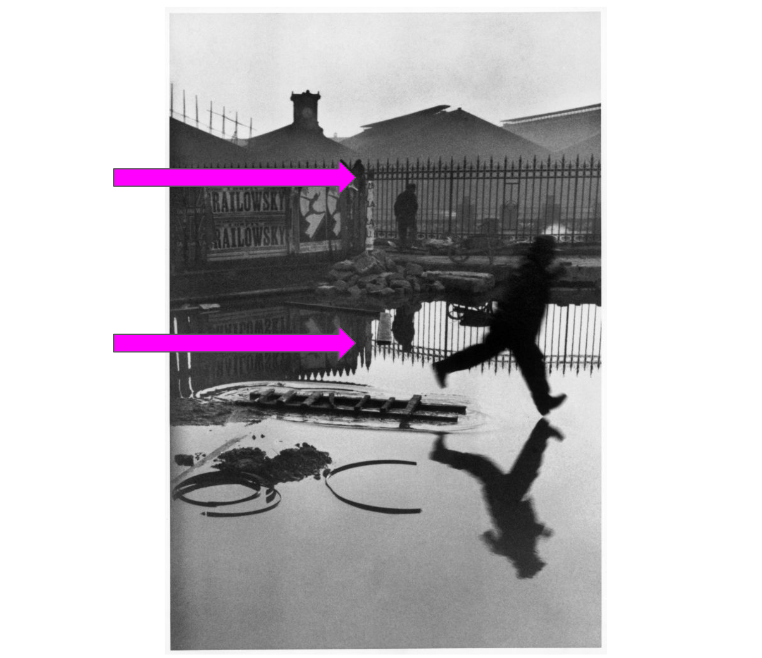Behind the Gare St. Lazare 1932

Bresson took this photo behind the Gare St. Lazare, train station. He took this image capturing the decisive moment that this man leaped over water rushing to his final destination. In this moment the man is mid leap, in the air, showing the rawness and realness of the image. The image doesn’t just capture this person in the action, the background and foreground play a big part of the image. Things such as leading lines, balance, framing and rule of thirds also make this image what it is.
Leading Lines

In this photo there are some obvious leading lines which draw your attention to the leaping man, the focal point. These can be found horizontally across the top of the gate and in the water, in the shadows of the objects floating. These automatically, but not done purposefully, attract your eyes to the man in the middle right as he is enclosed between the subtle lines.
Balance & Framing – Negative Space
In this image, there is some negative space which draws your attention to the leaping man, ensuring the attention is on him. This photograph is well balanced, for example, the man in the distant background, is also reflected onto the water along with the gate and building causing the image to be symmetric and to be balanced.
Rule of Thirds
This image works really well as there are things happening across all thirds. However, the main attraction, the man, is in the far right third drawing your attention to him. I think this works really well as he is travelling in that direction which adds some mystery to it as we can.t see where he is going but it is as if we are following him.
Colour
Because of the limitations of cameras in the 30’s, this photo could only be taken in black and white. However, because of this, it allows you to see the image for what it is and not focus on the bright colours that may have been there. It also means that it gives it an almost timeless appearance to it.
Camera Settings
Cartier Bresson most likely used a fast shutter speed to capture the leaping man in sharp focus. He also used a low aperture to catch a still, focused image of this man, focussing on both the foreground and background.
Lighting
For this image, the only lighting used was the natural sunlight presumably around midday as the position of shadows suggest so. This makes the image more natural as it is already taken off guard, the lighting being natural is another way for Cartier Bresson to capture the reality of the moment. The sunlight can normally not turn out well in photos due to strong shadows or the sunlight overtaking, however in this case, he has made these usual flaws into his own advantages. The shadows made interesting geometrical shapes in the background and they also add depth to the image.
